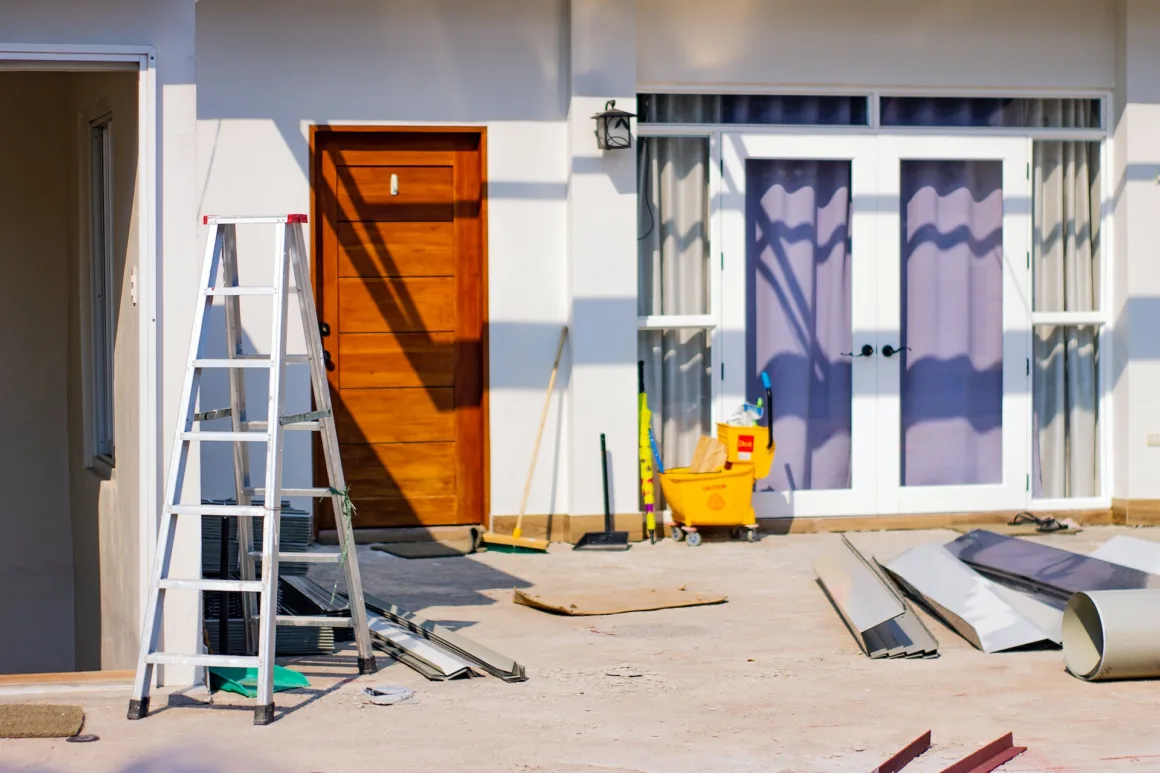Table of Contents Show
Why DIY Renovation?
Embarking on a DIY renovation project can be an exciting and rewarding experience. Not only does it allow you to personalize your space, but it can also save you a significant amount of money. However, it’s essential to be aware of potential risks, especially when it comes to asbestos exposure.
Asbestos, once a commonly used material in construction due to its fire-resistant and insulating properties, has since been linked to severe health conditions, including lung cancer and mesothelioma. It is crucial to take necessary precautions to ensure your safety and the safety of your loved ones during any renovation process.
The Risks of Asbestos Exposure
When asbestos-containing materials are disturbed or damaged, microscopic fibers are released into the air. If inhaled, these fibers can become lodged in the lungs, causing long-term health issues. Although asbestos is most commonly associated with older homes, it can still be found in buildings constructed as late as the 1990s.
While asbestos is harmless when left undisturbed, it becomes a concern during renovation projects. Without proper precautions, DIY enthusiasts can unknowingly release asbestos fibers into their living spaces, putting themselves and others at risk. This is why it’s crucial to determine whether your home contains asbestos before starting any renovation project.
Identifying Asbestos in Your Home
It is not recommended to remove asbestos yourself. Asbestos removal is a hazardous process that requires specialized equipment and training. Identifying asbestos in your home can be challenging, as it is often mixed with other materials. However, there are some common areas where asbestos is likely to be found:
- Insulation materials around pipes, boilers, and heating ducts
- Vinyl floor tiles and linoleum
- Roofing materials, including shingles and cement siding
- Textured paints and coatings
- Popcorn ceilings
The only way to know for sure if your home contains asbestos is to have a professional test for it. If you have a reason to suspect that there is asbestos in your home, stop any home projects immediately and call in a local asbestos testing company to perform the proper tests.
You can also check periodically for tears, abrasions, or water damage. If you discover slightly damaged material, limit access to the area and do not touch or disturb it.
If asbestos material is more than slightly damaged, or if you are going to make changes in your home that might disturb it, professional repair or removal is needed. Before calling an asbestos abatement contractor, however, you should contact an industrial hygiene firm to inspect the affected area.
A proper assessment will include a complete visual examination and careful collection and analysis of samples. If asbestos is present, the inspector should provide a written evaluation describing its location and extent of damage, and give recommendations for correction or prevention.
How Much Does it Cost to Remove Asbestos from Your House?
The cost of removing asbestos from a house depends on the material being removed, the size of the contaminated area, and disposal fees. The average asbestos removal cost is $1,123 to $2,872, with a national average of $1,994.
Typically, removing asbestos from inside a residential property costs $5 to $20 per square foot, while removing asbestos from the exterior can cost as much as $150 per square foot. The abatement job’s price depends on the size, location, and difficulty.
Asbestos removal costs between $450 and $6,000 depending on the specific removal process, the amount of asbestos present, and the size of the space.
Safety Precautions
If you decide to tackle a renovation project in a home that contains asbestos, it is essential to follow safety guidelines to minimize the risk of exposure:
- Wear protective clothing, including disposable coveralls, gloves, and a respirator rated for asbestos.
- Seal off the work area with plastic sheeting to prevent asbestos fibers from spreading to other parts of the house.
- Use wet removal methods to minimize the release of asbestos fibers into the air. Avoid using power tools that may generate dust.
- Dispose of asbestos-containing materials properly, following local regulations. Do not dispose of them in regular household waste.
- Clean the work area thoroughly using wet wiping or a HEPA vacuum cleaner designed for asbestos cleanup.
- Consider hiring a licensed asbestos removal professional for larger projects or if you are unsure about how to safely handle asbestos-containing materials.
Conclusion
While DIY renovation can be a fulfilling endeavor, it’s crucial to prioritize safety, especially when it comes to asbestos exposure. By taking necessary precautions and consulting professionals when in doubt, you can enjoy the process of transforming your living spaces while protecting your health and the health of your loved ones.

